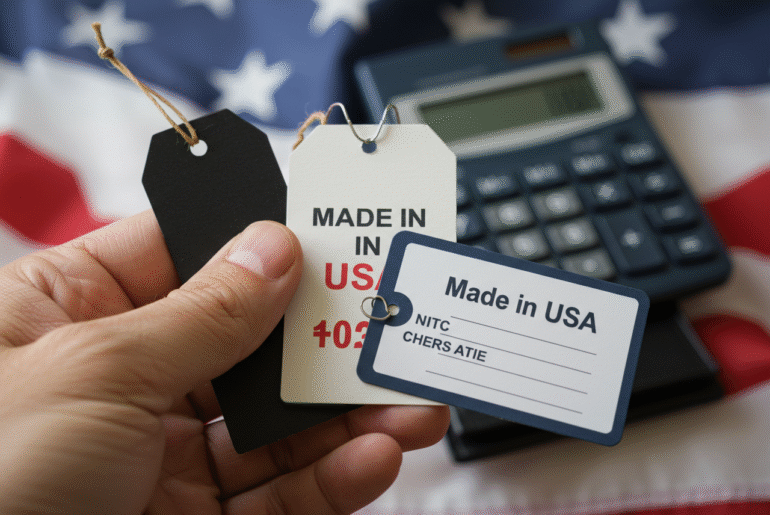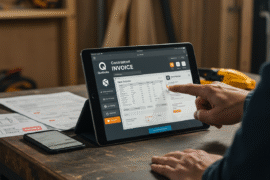This article may contain references to products or services from one or more of our advertisers or partners. We may receive compensation when you click on links to those products or services. Nonetheless, our opinions are our own.
The information presented in this article is accurate to the best of our knowledge at the time of publication. However, information is subject to change, and no guarantees are made about the continued accuracy or completeness of this content after its publication date.
- Core Highlights
- Why Domestic Products Appeal to Shoppers
- How Craftsmanship Affects Consumer Spending
- Emotional Influence on Shopping Behavior
- Weighing Cost Against Value
- Budget-Conscious Strategies for Buying American-Made
- Balancing Financial Goals with Ethical Spending
- Final Thoughts
- Frequently Asked Questions
- What does the study reveal about consumer willingness to pay for made-in-the-USA products?
- What are the primary reasons consumers prefer made-in-the-USA products?
- Are there specific product categories where consumers are more likely to pay more for American-made goods?
- How significant is the price difference that consumers are willing to accept?
- Recommended Reads
Core Highlights
A recent consumer study explores whether shoppers are willing to pay more for products labeled “Made in the USA.” The findings reveal how motivations such as quality, ethics, and national pride shape spending habits. This article analyzes the economic and emotional factors behind these purchasing choices and provides practical advice for budget-conscious buyers who value domestic goods.
Why Domestic Products Appeal to Shoppers
Motivations Behind Purchasing American-Made Goods
Choosing American-made items often comes with a sense of trust in their quality and durability. Beyond product performance, purchasing domestically made goods supports local economies and job markets. Consumers who prioritize community well-being and sustainability may find additional value in these products.
- Quality Assurance: Domestic manufacturing often adheres to more rigorous safety and quality standards.
- Environmental Impact: Shorter shipping distances reduce carbon emissions.
- Community Support: Local production sustains regional jobs and stimulates the economy.
How Craftsmanship Affects Consumer Spending
Benefits of Prioritizing High-Quality Goods
Spending slightly more on well-made items can translate to long-term savings. Products built with care and attention to detail often outperform lower-cost alternatives, offering greater satisfaction and longevity.
- Longevity: Premium materials and construction mean fewer replacements.
- Economic Support: Investing in local goods keeps resources within the community.
- Performance: Superior craftsmanship often results in better functionality.
Price Comparison of Quality vs. Standard Items
| Product Type | Average Cost (Quality vs. Standard) |
|---|---|
| Clothing | $75 vs. $30 |
| Kitchen Appliances | $250 vs. $100 |
| Furniture | $1,200 vs. $500 |
These comparisons highlight how spending more upfront may lead to better outcomes over time.
Emotional Influence on Shopping Behavior
Why National Pride Affects Your Choices
The emotional attachment to American-made products often extends beyond logic. Consumers motivated by patriotism, community pride, or ethical concerns may find it easier to justify a higher cost.
- Community Engagement: Choosing local reflects care for regional development.
- Trusted Quality: Domestic goods are perceived as safer and more reliable.
- Environmental Responsibility: Local manufacturing reduces emissions through minimized transport.
How Emotional Factors Shape Decisions
| Factor | Impact on Decision |
|---|---|
| Price | Willingness to pay more for value-aligned products |
| Quality | Greater satisfaction and brand loyalty |
| Brand Image | Stronger consumer bonds when patriotism is promoted |
When products align with both values and expectations, spending becomes more purposeful.
Voted "Best Overall Budgeting App" by Forbes and WSJ
Monarch Money helps you budget, track spending, set goals, and plan your financial future—all in one app.
Get 50% OFF your first year with code MONARCHVIP
Weighing Cost Against Value
Is Paying More for Domestic Goods Justifiable?
Higher price tags don’t always deter buyers—especially when products offer clear advantages. Items made in the USA are often associated with strict regulations and ethical practices.
- Quality Assurance: Consistency and durability may offset higher costs.
- Economic Impact: Local spending supports job markets and infrastructure.
- Sustainability: Stricter regulations promote responsible sourcing.
Comparison of Domestic vs. Imported Products
| Criteria | Made in USA | Imported |
|---|---|---|
| Average Price | Higher | Lower |
| Quality Durability | Often superior | Variable |
| Economic Impact | Positive Local | Less Impact |
Balancing value and budget is a personal decision shaped by long-term priorities.
Budget-Conscious Strategies for Buying American-Made
How to Shop Smart and Support Local Brands
A little research helps identify quality domestic items without overspending. Buyers can make informed decisions by exploring online platforms and reviewing labels in stores.
- Use Niche Marketplaces: Search platforms dedicated to American-made goods.
- Check Labels: Look for clear indicators of domestic manufacturing.
- Ask Sales Associates: Inquire about store bestsellers and brand origins.
Smart Shopping Tools for Comparison
| Product | Price | Brand | Rating |
|---|---|---|---|
| Tote Bag | $40 | American Craft Co. | 4.5/5 |
| Kitchen Utensils | $30 | USA Kitchenware | 4.7/5 |
| Jeans | $70 | American Denim | 4.6/5 |
Comparing price, rating, and brand reputation helps balance cost with quality.
Balancing Financial Goals with Ethical Spending
What to Consider Before Paying More
Buying domestically produced items can positively influence your local economy—but should align with your financial circumstances as well.
- Cost vs. Value: Higher upfront costs may be worthwhile for quality.
- Sustainability: Local production reduces environmental tolls.
- Job Creation: Supporting U.S. businesses helps strengthen communities.
Domestic vs. Imported Product Considerations
| Consideration | Local Product | Imported Product |
|---|---|---|
| Average Cost | Higher | Lower |
| Job Creation | Yes | No |
| Environmental Impact | Lower Carbon Footprint | Higher Carbon Footprint |
Conscious consumerism allows for meaningful support of domestic producers—without neglecting personal finance.
Final Thoughts
Spending more on American-made products is not just a financial decision—it’s a reflection of values, priorities, and long-term goals. While budget constraints remain a factor, many buyers find value in supporting local economies, promoting sustainability, and investing in quality. By weighing the tangible and intangible benefits, consumers can make purchasing choices that are both economically smart and socially responsible.
Frequently Asked Questions
What does the study reveal about consumer willingness to pay for made-in-the-USA products?
A significant portion of consumers are open to paying more, driven by values such as quality, job support, and local impact.
What are the primary reasons consumers prefer made-in-the-USA products?
Trust in quality standards, a desire to support domestic jobs, and concern for environmental effects are top motivators.
Are there specific product categories where consumers are more likely to pay more for American-made goods?
Yes. Items like clothing, kitchen appliances, and electronics often justify higher spending due to craftsmanship.
How significant is the price difference that consumers are willing to accept?
Consumers are generally open to paying about 10–15% more, depending on product type and perceived benefits.

Reviewed and edited by Albert Fang.
See a typo or want to suggest an edit/revision to the content? Use the contact us form to provide feedback.
At FangWallet, we value editorial integrity and open collaboration in curating quality content for readers to enjoy. Much appreciated for the assist.
Did you like our article and find it insightful? We encourage sharing the article link with family and friends to benefit as well - better yet, sharing on social media. Thank you for the support! 🍉
Article Title: Is Buying Made in USA Products Worth the Extra Cost?
https://fangwallet.com/2025/05/20/made-in-usa-products/The FangWallet Promise
FangWallet is an editorially independent resource - founded on breaking down challenging financial concepts for anyone to understand since 2014. While we adhere to editorial integrity, note that this post may contain references to products from our partners.
The FangWallet promise is always to have your best interest in mind and be transparent and honest about the financial picture.
Become an Insider

Subscribe to get a free daily budget planner printable to help get your money on track!
Make passive money the right way. No spam.
Editorial Disclaimer: The editorial content on this page is not provided by any of the companies mentioned. The opinions expressed here are the author's alone.
The content of this website is for informational purposes only and does not represent investment advice, or an offer or solicitation to buy or sell any security, investment, or product. Investors are encouraged to do their own due diligence, and, if necessary, consult professional advising before making any investment decisions. Investing involves a high degree of risk, and financial losses may occur including the potential loss of principal.
Source Citation References:
+ Inspo
There are no additional citations or references to note for this article at this time.












































